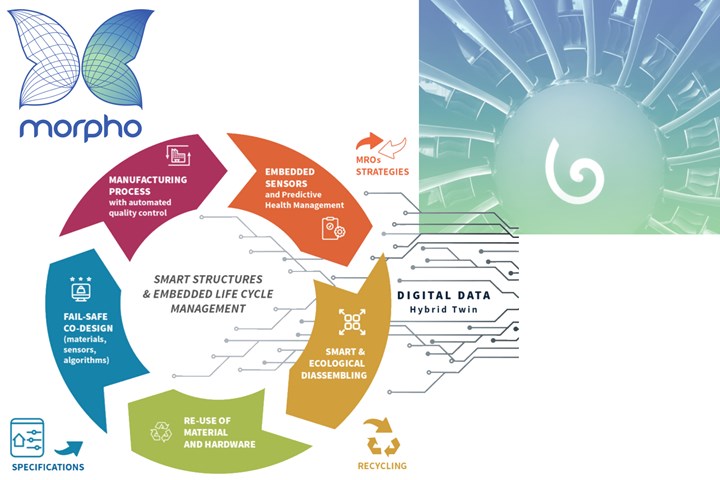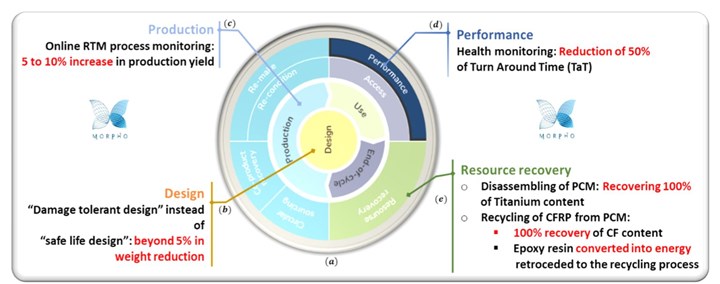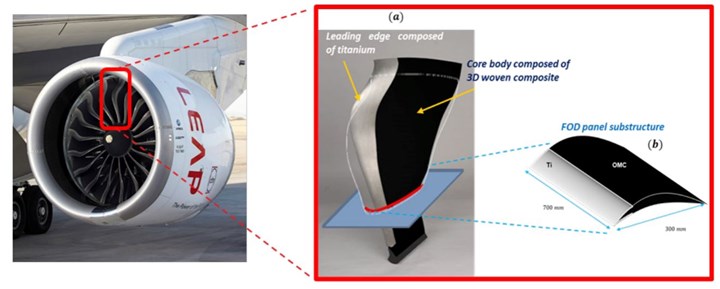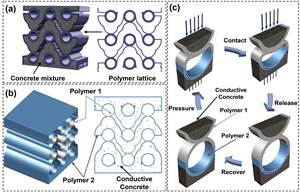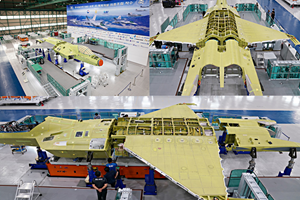Developing next-gen, smart engine composite fan blades
EU-funded MORPHO project will use embedded sensors, data-driven hybrid twins and machine learning to increase RTM yield, improve damage-tolerant design, achieve SHM and 100% recycling.
Photo Credit: MORPHO website logo and engine graphic (copyright CFM International, Eric Drouin photographer), Smart structures & embedded life cycle management diagram from “Embedded Life-Cycle Management for Smart Multimaterials Structures: Application to Engine Components” presentation by N. Mechbal for Circular Aviation for Green Growth - EU Green Week 2021 Partner Event.
In the transition to Industry 4.0, deployment of connected objects is reinventing manufacturing and maintenance processes, enabling tighter integration of the value chain. Adding native connectivity to aircraft parts is a key technology to unlock this transformation. MORPHO (Embedded Life-Cycle Management for Smart Multimaterial Structures: Application to Engine Components) is an EU-funded project that aims to embed sensor technology into engine components, providing them with cognitive capabilities to improve manufacturing processes and operational availability without compromising safety.
MORPHO is the joint effort of European experts in smart manufacturing, sensor integration, structural health monitoring (SHM) and recycling of aerospace structural parts. The MORPHO consortium is led by Ecole Nationale Supérieured’Arts et Métiers (ENSAM, Paris, France) and comprises 10 partners from six countries including engine OEM Safran (Paris, France), TU Delft (Netherlands); University of Patras (Greece); Fraunhofer IFAM (Germany); sensor specialist Synthesites (Greece); Comet Group (Belgium); FiSens (Germany); ESI Spain (Spain) and Fundación Empresa Universidad Gallega (FEUGA, Spain).
MORPHO proposes to embed printed and optical fiber sensors during the manufacture of composite fan blades for aircraft engines. The parallel development of digital/hybrid twins will drastically improve life cycle management (LCM) for the blades. Particular focus will be on the efficient, profitable and environmental-friendly manufacturing, maintenance and recycling of these next-generation smart engine fan blades. MORPHO’s ambition is also to help set future standards for reliable, sustainable, agile and cost-effective industrialization of these new intelligent and multifunctional parts as well as for their associated manufacturing, maintenance and recycling processes.
The MORPHO consortium will work from April 2021 until September 2024 in this €5 million, EU-funded Horizon 2020 program.
Photo Credit: “Embedded Life-Cycle Management for Smart Multimaterials Structures: Application to Engine Components” presentation by N. Mechbal for Circular Aviation for Green Growth - EU Green Week 2021 Partner Event.
Smart, multifunctional and multi-material fan blades
Modern and future engine fan blades, such as those used in the LEAP aircraft engine, are designed and manufactured using a 3D-woven carbon fiber fabric impregnated with epoxy resin and cured using resin transfer molding (RTM). A titanium leading edge is adhesively bonded for augmented erosion and impact resistance. This construction enables significant weight savings while maintaining high strength and fracture toughness (see “Weaving the future in 3D”). Yet they remain vulnerable to an unexpected foreign object impact and to the initiation of damage mechanisms. Moreover, their environmentally friendly recycling is still a challenge.
Aiming for Technology Readiness Level (TRL) 3, MORPHO will develop and test technological bricks on a foreign object damage (FOD) panel demonstrator that is representative of composite fan blade chord at a specific height. This approach is used to test the design of a fan blade before launching its manufacturing to avoid and manage any risk. MORPHO will thus use a similar strategy.
Photo Credit: “Embedded Life-Cycle Management for Smart Multimaterials Structures: Application to Engine Components” presentation by N. Mechbal for Circular Aviation for Green Growth - EU Green Week 2021 Partner Event.
MORPHO proposes to embed printed and fiber-optical sensors in FOD panels, providing them with cognitive capabilities from the moment they are manufactured. The parallel development of digital/hybrid twin models will drastically improve the FOD Life Cycle Management. Throughout the project, demonstrators will be developed to analyze and validate the proposed methods and tools.
Environmental-friendly manufacturing
The environmentally friendly recycling of a composite fan blade’s costly components is a high priority of the MORPHO project. Thanks to the development of new processes for disassembly and recycling of hybrid metal-composite parts, MORPHO aims to reduce the cost of future aircraft parts and bring them inline with the circular economy. The project seeks to develop a new methodology that combines two innovative processes: laser-induced disassembly and pyrolysis technology for the optimal recycling of the parts at the end of their service life.
The MORPHO project is provided with external guidance and expert advice by an international advisory board which represents a valuable diversity of skills and expertise and aims to reflect the range of organizations that the project seeks to engage, including: the European Aviation Safety Agency (EASA); VESTAS Wind Systems; KLM Royal Dutch Airlines; Stellantis; the University of Vigo, Stanford University and the National Composites Center (U.K.).
More details can be found at the CORDIS website’s MORPHO project fact sheet. The MORPHO project website is currently under construction but hopefully will be available soon.
Related Content
21st century concrete: composite metamaterial with super compressability, energy harvesting
Material comprising 3D-printed, auxetic, reinforced polymer lattices in conductive cement matrix can compress up to 15% and generate electricity for lightweight, mechanically tunable structures with energy harvesting and sensing.
Read MoreEOLIAN kicks off bio-based wind blade development
EU project will develop bio-based, repairable and recyclable vitrimer composites and advanced sensors for highly reliable, sustainable wind blades.
Read MoreAcellent contracted to supply SHM systems for KAI KF-21 aircraft
Adaptable custom structural health monitoring (SHM) technology will be used to monitor damage and load of composite aerostructures.
Read MoreAcellent SHM 4.0 software supports real-time composites monitoring
Integrity and condition of a variety of metal and composite parts and structures is made possible through end-to-end software suites.
Read MoreRead Next
“Structured air” TPS safeguards composite structures
Powered by an 85% air/15% pure polyimide aerogel, Blueshift’s novel material system protects structures during transient thermal events from -200°C to beyond 2400°C for rockets, battery boxes and more.
Read MoreAll-recycled, needle-punched nonwoven CFRP slashes carbon footprint of Formula 2 seat
Dallara and Tenowo collaborate to produce a race-ready Formula 2 seat using recycled carbon fiber, reducing CO2 emissions by 97.5% compared to virgin materials.
Read MoreDeveloping bonded composite repair for ships, offshore units
Bureau Veritas and industry partners issue guidelines and pave the way for certification via StrengthBond Offshore project.
Read More




